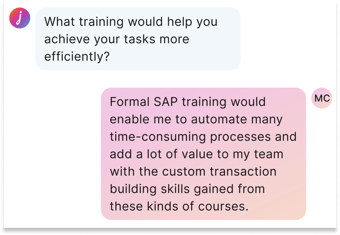Tips for giving constructive feedback
Provide constructive rather than negative feedback, answer the question, be specific and provide examples, offer expert solutions, discuss outcomes rather than people, and make your points clear and concise.
Feedback is a valuable gift that you can give to your organization to help them inform important decisions. Giving feedback is a skill, and like all skills, it takes practice to get it right. How you phrase your feedback can impact whether it gets actioned.
Actionable feedback has the power to give the information your organization needs to make positive changes and empowers your organization to make decisions based on your input.
Here are some helpful tips to consider when framing your feedback.
1. Provide constructive rather than negative feedback
Before you give feedback, it's important to understand the difference between constructive and negative feedback:
-
Constructive feedback usually centres around things an organisation can do to improve.
-
Negative or destructive feedback puts the organisation down instead of letting them know what they can do to be better.
Approach your feedback with the intention of helping your organisation grow—even if you feel frustrated, avoid criticising your organisation.
- "It would be great if..."
- "I recommend" / "I suggest..."
- "[suggestion] would help to..."
- "Perhaps we could..."
 2. Answer the question
2. Answer the question
Questions are centred around specific topics that organizations are trying to positively impact. Your feedback helps to inform which actions are taken on the topic. Avoid giving general feedback and try and answer the posed question as best you can.
3. Be specific and provide examples
When you're giving feedback, it's important to be as specific as possible. Avoid using general phrases such as "need better tools", "better training", "improve support", or "streamline our systems and processes". It's difficult to action these requests.
- Specify what type of support or training you need.
- State which systems or processes need improving and what needs improving.
- Describe what tools are missing or need upgrading.
4. Offer expert solutions
 Joyous is about unlocking your expertise to identify actionable themes and solve critical business challenges.
Joyous is about unlocking your expertise to identify actionable themes and solve critical business challenges.5. Discuss outcomes rather than people
 It may be tempting to call out people or teams for their mistakes and inefficiencies.
It may be tempting to call out people or teams for their mistakes and inefficiencies.
Instead, frame your feedback in a way that helps to prevent mistakes or inefficiencies, and offers a constructive solution.
6. Make your points clear and concise
Clear and concise feedback is more likely to be actioned and engaged with because it is easy and quick to understand.

To ensure your feedback is clear and concise:
- Avoid talking in circles
- Use bullet points where appropriate
- Avoid colloquial, metaphorical, or poetic language
- Check your sentences for typos
🥸 🤠 And...have fun with it! Use emojis, images, & GIFs to add colour and playfulness to feedback. That way, it's sure to capture attention 🌈 🚀
-png.png?width=337&height=260&name=Screenshot%202024-03-20%20at%2012-39%201%20(1)-png.png)
